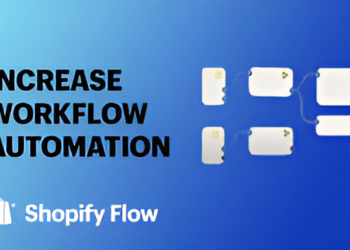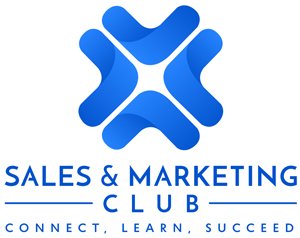“The only way to get the best of an argument is to avoid it.” — Dale Carnegie
Sales is the lifeblood of any business. Yet, despite its critical importance, it remains one of the most challenging aspects of any operation. Sales professionals frequently encounter objections—those hesitations, doubts, and outright rejections that customers voice as reasons for not purchasing a product or service. Overcoming these objections is crucial for closing deals and driving business growth. This blog explores effective strategies for responding to common sales challenges, ensuring that objections transform from roadblocks into stepping stones for success.
Understanding Sales Objections
Sales objections are a natural part of the selling process. They reflect the customer’s concerns, uncertainties, and sometimes lack of information. Objections can generally be categorized into four main types: price objections, value objections, time objections, and trust objections. Understanding these categories helps in crafting targeted responses that address the specific concerns of the customer.
Price Objections
Price objections are the most common. Customers often worry about the cost of a product or service. They might think the price is too high or that they can find a cheaper alternative elsewhere. Addressing price objections effectively requires a clear understanding of your product’s value proposition and the ability to communicate that value to the customer.
Value Objections
Value objections arise when customers are unsure whether the product or service meets their needs. They might question the benefits, the quality, or the applicability of what you’re offering. Overcoming these objections involves demonstrating the tangible and intangible benefits of your product, providing proof of its efficacy, and ensuring the customer sees the value in their investment.
Time Objections
Time objections are related to the timing of the purchase. Customers might feel that they need more time to decide, or they might believe that they do not have the time to fully utilize the product. Addressing these objections often involves creating a sense of urgency or aligning the purchase timeline with the customer’s schedule.
Trust Objections
Trust objections are concerns about the company, the product, or the salesperson’s credibility. Customers need to feel confident that they are making a wise decision and that they can trust you to deliver on your promises. Overcoming trust objections involves building rapport, providing guarantees, and showcasing positive testimonials and case studies.
Preparing for Objections
Preparation is key to effectively handling objections. Here are some foundational strategies to help you prepare:
Know Your Product Inside Out
Understanding every feature of your product and how it benefits the customer is crucial. This includes knowing various use cases and how your product has successfully addressed similar problems in the past. It also means being aware of how your product stands against competitors and being able to articulate this clearly.
Understand Your Customer
Conduct thorough needs assessments to understand the specific requirements of each customer. Identify their challenges and pain points and develop detailed buyer personas to predict potential objections. This will help you tailor your responses to address their specific concerns.
Build Rapport
Building a strong relationship with the customer is essential. Listen more than you speak to fully understand their perspective. Show genuine concern for their problems and demonstrate how your product can help. Establish credibility by sharing success stories, testimonials, and case studies.
Effective Responses to Common Objections
Addressing objections effectively requires specific strategies tailored to each type of objection. Here are some approaches for the most common objections:
Price Objections
Price objections are perhaps the most frequent and can be daunting. Here are strategies to address them:
Highlight Value Over Cost
“I understand that price is a concern. However, let’s look at the value this product brings. It offers [specific benefit], which will help you [specific outcome]. Over time, this can actually save you money by [specific example].”
Break Down the Cost
“Let’s break down the cost. This price includes [list features/services]. When you look at it this way, the cost per day/month is very reasonable for the benefits you receive.”
Offer Payment Plans
“If the upfront cost is a concern, we offer flexible payment plans that can fit into your budget.”
Value Objections
When customers doubt the product’s value, they need reassurance:
Provide Proof
“I understand your hesitation. Here’s a case study/testimonial from a customer who faced similar challenges and saw incredible results.”
Demonstrate the ROI
“This product is an investment. For example, by using it, you can expect to [specific benefit], which can lead to [specific monetary gain or time savings].”
Offer a Trial
“Why don’t you try it for [trial period]? This way, you can see the value first-hand without any risk.”
Time Objections
Time objections often revolve around the customer feeling pressured or unsure about when to make a decision:
Create Urgency Without Pressure
“I understand timing is crucial. However, this offer/promotion is only available for a limited time, and I wouldn’t want you to miss out on these savings.”
Align with Their Timeline
“When do you think would be the best time for you to implement this solution? Let’s work on a timeline that fits your schedule.”
Emphasize the Cost of Delay
“I understand you might need more time, but every day without this solution, you’re potentially losing [specific benefit]. How much is that costing you in the long run?”
Trust Objections
Building trust is fundamental to overcoming objections related to credibility:
Share Testimonials and Case Studies
“Many of our clients had similar concerns. Here’s a testimonial/case study that might address your doubts.”
Offer Guarantees
“We are confident in our product, which is why we offer a [specific guarantee]. This minimizes your risk.”
Be Transparent
“I appreciate your concern. Here are some third-party reviews and independent studies that validate our claims.”
Advanced Techniques for Overcoming Objections
In addition to the basic strategies, there are advanced techniques that can help you handle objections more effectively:
The Feel, Felt, Found Method
This technique involves empathizing with the customer’s concern, sharing that others have felt the same way, and then explaining what they found after using the product.
“I understand how you feel. Many of our customers initially felt the same way. However, they found that once they used the product, it really [specific benefit].”
Reframing the Objection
Turn the objection into a positive by reframing the perspective.
“I see that cost is a concern. Wouldn’t it be more cost-effective to invest in a solution that actually addresses your problem long-term rather than temporary fixes?”
Asking Probing Questions
Encourage the customer to elaborate on their objection to better understand and address it.
“Can you tell me more about why you feel this product might not be the right fit? What specific concerns do you have?”
Using the “Yes, But” Technique
Acknowledge the customer’s objection, then counter it with a positive statement.
“Yes, the initial investment is significant, but when you consider the long-term benefits and savings, it’s truly a worthwhile investment.”
Training and Continuous Improvement
Sales teams should be continuously trained and equipped with the latest tools and techniques to handle objections effectively. Here are some strategies for ongoing improvement:
Regular Training Sessions
Conduct regular role-playing exercises to simulate various sales scenarios and objections. Offer workshops on advanced sales techniques and objection handling. Invite successful sales professionals to share their experiences and strategies.
Feedback Loops
Regularly gather and analyse customer feedback to understand common objections and refine responses. Encourage team members to share their experiences and best practices.
Technology and Tools
Use CRM systems to track and analyse objection trends. Provide sales teams with tools and resources that help them address objections on the spot. Utilize AI-driven insights to predict and prepare for objections based on historical data.
Psychological Principles in Overcoming Objections
Understanding the psychology behind objections can enhance the effectiveness of your responses. Here are some psychological principles to consider:
Social Proof
People are influenced by the actions and opinions of others. Use testimonials, case studies, and user reviews to build credibility.
Authority
Customers are more likely to trust information from authoritative sources. Position yourself as an expert by sharing industry knowledge, certifications, and achievements.
Reciprocity
The principle of reciprocity suggests that people feel obliged to return favours. Offer something of value, such as a free consultation or a trial period, to create a sense of obligation.
Scarcity
The fear of missing out can be a powerful motivator. Highlight limited-time offers, exclusive deals, or the scarcity of the product to create urgency.
Conclusion
Handling objections is an art that blends empathy, preparation, and strategic thinking. By understanding the nature of objections and employing targeted techniques, sales professionals can transform these challenges into opportunities. Remember, objections are not rejections; they are invitations to engage more deeply with the customer, address their concerns, and demonstrate the true value of your offering.
In the words of Dale Carnegie, “The only way to get the best of an argument is to avoid it.” Rather than arguing with the customer, seek to understand their perspective, address their concerns sincerely, and guide them towards a decision that benefits them. With the right approach, every objection can become a stepping stone to a successful sale and a satisfied customer.


















